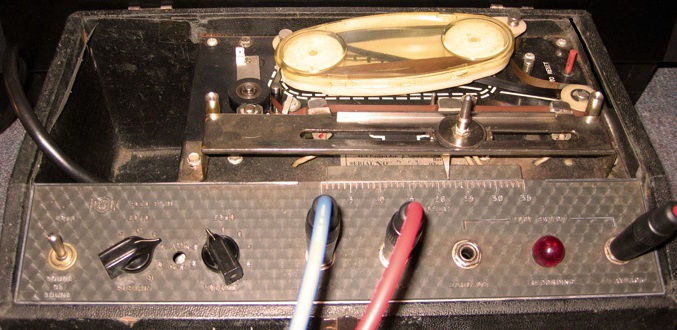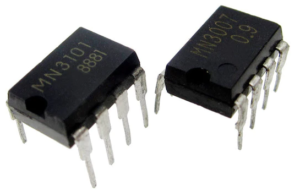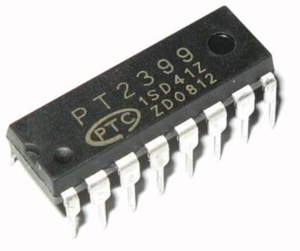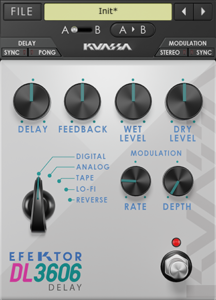
Delay Effects is one of the essential and most used guitar pedal effects in music history. Fact! It is used to create soundscapes, to make an illusion of a real environment, to give a specific feeling to musical content and it’s a part of almost every contemporary music genre over the last 70 years.
When you scream at the top of a mountain, facing big ridges in the distance, you can hear yourself back after some time. Your voice is “delayed” with a diminished level with a magical repetition that fades way. This phenomenon, or more specifically, the reflection of the sound wave we hear is known as ‘echo’.
Tape Delays.
The development of magnetic tape recorders and especially the more advanced tape machines as we know today were developed during the 1930s in Germany by BASF. This milestone in technology gave us musicians endless possibilities of creative performance. From recording our ideas, releasing albums, and of course the magnificent echo delay guitar effect.
Recording engineers discovered that looping the signal from the recording and playing heads in the tape machine produced a delayed sound into the original signal. Stacking a few machines in a chain is producing the so-called “Echo” effect or phenomenon that we hear in the mountains or big spaces.
The length of the delayed audio signal between each loop or repeat measured in milliseconds or seconds depends on the distance that the tape is traveling between the two heads: the playback head and the recording head.
Recordists and mixers began making their own echo devices using and stacking reel to reel magnetic devices together for use in the studio in the late 1940s. Tape Delays or the Echo pedal effect units became available in the 1950s. An example is the famous Echoplex.
Read more: https://en.wikipedia.org/wiki/Delay_(audio_effect)
The first commercial guitar amplifier with a built-in guitar effect was the EchoSonic amplifier made by Ray Butts. According to history, Ray Butts made the first one in 1953 and later sold the second unit to Chet Atkins. The built-in tape echo was capable of producing the iconic slapback echo delay utilized by many countries and rockabilly players and of course: Elvis Presley.
Later in the years, the tape technology evolved even further and then a Japanese company called Roland released a legendary unit called the Space Echo in 1973
Read more: https://en.wikipedia.org/wiki/Roland_RE-201
Analog – Digital Delays.
In the same period, solid-state delay effect using analog “bucket-brigade” chip became available in the 1970s. Bucket brigade delay (BBD) was invented in 69’ by F.L.J. Sangster and K. Teer at Philips Laboratories in the Netherlands.
As the science of electronics and its implementation in the effects of the musical instrument evolved in the years, many new possibilities showed up. And then the more compact digital delay units were born. Digital delay operates by sampling the input signal through an analog to digital converter, processing it in the integrated circuit (IC) chips and then converting it back from digital to analog.
In 1983 The BOSS released the world’s first guitar-oriented digital delay effect pedal : DD-2 Digital Delay
Some delay unit names worth mention :
- Boss DD-3
- Ibanez DE-7
- Lexicon PCM42
- TC Electronic 2290
They are using integrated-circuit chips and CMOS based chips for delay effects. The architecture of those chips gave the engineers more freedom to fit everything in a small form factor. Better quality and consistent production.
It’s worth mentioning one of the widely used IC is PT2399. This IC is the most sought after “analog” sounding digital delay chip. Many well-known companies such as Danelectro or Korg and smaller boutique guitar effects pedal manufacturers still use the PT2399 in their designs.
Software Plugin Delays
In the early 2000s, the software audio plugins were born. Using modern computer technologies many different effects, based on hardware, were coded using sophisticated computer language. This new rapid expanding technology gave the musicians everything they have dreamed and the possibility to have expensive hardware audio recording and mixing gear, in their desktop computer. For a slice of the price of the real units, everybody got into their hands’ professional audio processing effects, just a few mice clicks away.
The Delay Plugins Software Effects
The various delay types known in the hardware effects, such as tape, analog and digital delay effects are carefully modeled using the computer power and the knowledge of the software audio programming engineers. They exist in multiple plugin formats with different features.
Most of the time the new generation of digital software effects and (vst ) plugins are hard to be distinguished from the real effect units. Many of the hardwares are using DSP chip anyways





